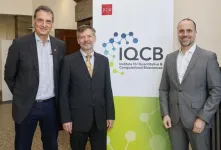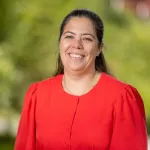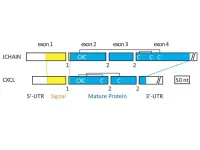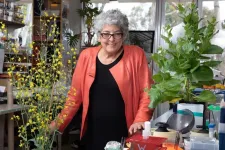Using vibrator found in cell phones, researchers develop 3D tumor spheroids to screen for anti-cancer drugs
2024-01-30
(Press-News.org) Depending on their location, cancer cells within a three-dimensional (3D) tumor structure can have different microenvironments. Cells in the core of the tumor receive less oxygen (hypoxia) and nutrients than those in the periphery. These varying conditions can drive differences in cell growth rates and drug sensitivities, highlighting the need to study 3D tumor models in lab settings. Until recently, conventional methods used to create such tumor spheroids were time-consuming, produced inconsistent results and involved high setup costs.
Investigators at Brigham and Women’s Hospital, a founding member of the Mass General Brigham healthcare system, developed a low-cost, high-throughput device that can reliably generate uniform tumor spheroids. The study describes how to assemble the ‘Do-It-Yourself (DIY)’ device from parts totaling less than $7, including a coin-vibrating motor commonly found in cell phones.
By vibrating a suspension of cancer cells flowing rapidly out of a fine nozzle, the team was able to create nearly 4000 equally sized droplets per minute. They found that cancer cells within the droplets aggregated to form tumor spheroids with hypoxic cores and exhibited proliferation markers typical of in vivo tumors.
The tumor spheroids also demonstrated clinically typical responses to chemotherapy, with cancer cells at the hypoxic core driving tumor survival and drug resistance. These findings, the authors suggest, could help overcome the limitations of traditional two-dimensional cancer cell cultures and provide insights for improved drug development.
“We developed a simple, DIY method for reliable preclinical testing of anti-cancer drugs,” said corresponding author Hae Lin Jang, PhD, of the Center for Engineered Therapeutics. “The cost of devices often acts as a barrier to cancer research. Low-cost, simple-to-operate systems like ours are essential to democratize cancer research and make science more accessible.”
First author Bumseok Namgung, PhD, of the Center for Engineered Therapeutics added, “Our simple and low-cost system facilitates the anti-cancer drug research by enabling high-throughput drug screening.”
in Device.
END
ELSE PRESS RELEASES FROM THIS DATE:
2024-01-30
Ann Arbor, January 30, 2024 – Experiencing a pregnancy from sexual violence is common in the United States, according to research conducted by investigators at the Centers for Disease Control and Prevention (CDC) reported in the American Journal of Preventive Medicine, published by Elsevier. Nearly six million women in the United States who were raped, sexually coerced (defined as non-physically forced unwanted penetration), or both became pregnant as a result. This equates to about one in twenty American ...
2024-01-30
Johannes Gutenberg University Mainz (JGU) recently inaugurated its new Institute for Quantitative and Computational Biosciences (IQCB) in the presence of Clemens Hoch, the Minister of Science of Rhineland-Palatinate, and Professor Stefan Müller-Stach, JGU's Vice President for Research and Early Career Academics. The IQCB is an interdisciplinary research institute at the interface between the life sciences and neighboring disciplines including mathematics, computer science, physics, chemistry, and engineering, thus generating new opportunities for research by way of, for example, computer-aided analysis of large amounts of data, computer-based ...
2024-01-30
LAWRENCE — Researchers at the University of Kansas hope to better understand intricate mechanisms behind the evolution of galaxies, which travel through a “cosmic web” of different environments during their lifespans.
Gregory Rudnick, professor of physics & astronomy at KU, is leading a team that recently earned a $375,000 grant from the National Science Foundation to study “gas content and star-formation properties of galaxies” that are altered depending on where they are moving through the cosmos.
“The primary objective of this project is to comprehend the impact of environmental factors on the transformation of galaxies,” Rudnick ...
2024-01-30
Images
New, nontoxic materials could one day keep solar panels and airplane wings ice-free, or protect first responders from frostbite and more, thanks to a new University of Michigan-led project funded by the Defense Advanced Research Projects Agency.
The research team will study biological molecules used by other living things to survive freezing temperatures. The project officially begins this week and includes researchers from Raytheon Technologies, North Dakota State University and the University of Minnesota.
Existing materials used to accomplish these feats come with serious downsides. For instance, road salts ...
2024-01-30
The two most common obesity surgeries – gastric bypass and gastric sleeve – have few short-term complications and are equivalent in that sense. These are the findings of a study conducted at the University of Gothenburg.
Every year, around 5,000 obesity surgeries are performed in Sweden. The person undergoing surgery will normally have a BMI of at least 40, or 35 if they also have other serious medical conditions related to obesity.
The most common procedures are gastric bypass, where a large part ...
2024-01-30
A new study led by researchers at UCLA may change the way clinicians and scientists understand, diagnose and treat placenta accreta spectrum disorder, a serious condition in which the placenta fails to separate from the uterus at birth, jeopardizing the life and health of both mother and baby.
Researchers previously believed that certain overly invasive placental cells, called trophoblasts, were responsible for keeping the connection intact. But this new research, which identifies genetic and cellular changes within single cells where the placenta ...
2024-01-30
Although the interior of São Paulo state (Brazil) has higher human development indices (HDIs) and fewer Black people as a percentage of the population, they account for a larger proportion of deaths from cancer in the Barretos region than in São Paulo city, the state capital, according to a study supported by FAPESP. An article on the study is published in the journal Cancer Causes & Control.
In the 18 cities of the Barretos regional health district (RHD), the number ...
2024-01-30
UNIVERSITY PARK, Pa. — Biological systems can behave as siblings in several ways, including by borrowing something and never giving it back. That appears to be what the human immune system did with a protein that now helps bind and regulate the subunits that make up antibodies, according to a multi-institute research collaboration. They found that, before the immune system evolutionarily co-opted it, the protein originally belonged to gene family responsible for directing cells to move to the right location at the right time to address specific functional needs.
The researchers, including Kazuhiko Kawasaki, associate research professor of ...
2024-01-30
[New York, January 30, 2024] – Sergio E. Baranzini, PhD, a geneticist, neuroimmunologist and data scientist at the University of California, San Francisco, is the winner of this year’s Barancik Prize for Innovation in MS Research. Dr. Baranzini is being recognized for his pioneering efforts to integrate vast pools of information to understand complex mechanisms that cause MS and to develop more precise approaches to stop the disease and end it by prevention.
Baranzini is a Distinguished Professor and holds the Heidrich Friends and Family endowed chair in Neurology at the University of California, San Francisco ...
2024-01-30
LA JOLLA (January 30, 2024)—Salk Institute Professor Joanne Chory has been selected by the Franklin Institute in Philadelphia to receive a Benjamin Franklin Medal in Life Science for her achievements in plant science. She will receive a 14-karat gold medal and a $10,000 honorarium at the Franklin Institute Awards Ceremony in April 2024. Chory joins other extraordinary scientists and engineers as a Franklin laureate, including Nikola Tesla, Marie and Pierre Curie, Thomas Edison, Albert Einstein, and Jane Goodall, among others.
“Joanne’s contributions to the field of plant biology have impacted and will continue to impact scientists around the world,” ...
LAST 30 PRESS RELEASES:
[Press-News.org] Using vibrator found in cell phones, researchers develop 3D tumor spheroids to screen for anti-cancer drugs






